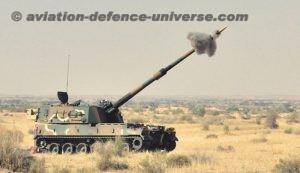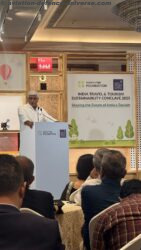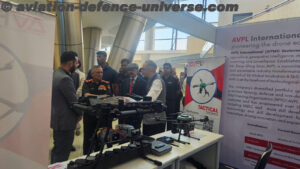By Lt. Gen B S Pawar (Retd.)
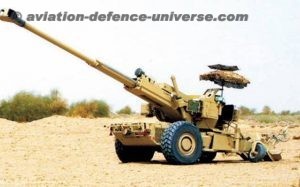
New Delhi. 28 September 2020.
Introduction
After nearly three decades of stagnation, the Indian Artillery Modernisation and Transformation finally appears to be falling in place. The long awaited M777 A2 Ultra Light Howitzer (ULH) and the K9 Vajra Tracked Self Propelled (SP) Gun System are part of the Indian Army They are the first modern artillery guns since the induction of 400 pieces of the Bofors 155/39 calibre FH77B in the mid 1980’s from Sweden. The success of the indigenously developed 155mm 45 calibre Dhanush gun (upgraded version of the Bofors) and reports of the indigenously developed Advanced Towed Artillery Gun System (ATAGS) achieving 40 km plus range during test firing last year, are indeed encouraging signs and auger well for the artillery modernization process as well as indigenous capability for developing state of art howitzer systems.
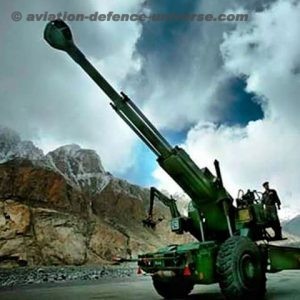
Simultaneously, there has also been a major progress in the Artillery’s Surveillance, Target Acquisition and Retaliatory Capabilities along with great strides made in the field of Rockets and Missiles. A major concern though remains the sordid state of ammunition, both in quantity and quality and the main weapon of the Gunners, without which even the most advanced gun systems would remain mere showpieces. The recent decision of the Government to partially open this critical sector to the private industry is a step in the right direction and needs to be pursued on priority.
Future Artillery Rationalisation Plan (FARP)
The Army’s FARP was formulated in 1999, with the basic aim to modernise, rationalise and standardise the artillery gun systems to a calibre of 155mm, in order to achieve greater ranges and commonality of ammunition. The plan included the purchase and manufacture of towed, mounted and ultra-light howitzers, including SP (both tracked and wheeled), multi-barrel rocket launcher (MBRL) systems, missiles, surveillance and counter bombardment equipment and UAVs – as per latest reports the UAVs have now gone under the control of Army Aviation Corps. The main highlight of this plan was the inclusion of the mounted gun system (MGS) and wheeled SP artillery platforms. The MGS provides a high level of autonomy with a shoot and skoot capability and has a distinct advantage in the mountains due to its shorter turning radius compared to the towed gun. The wheeled SP gun is ideally suited for the plains and the semi desert terrain vis-a-vis the tracked version, providing better speed and mobility at lesser costs – this project however has now been shelved and is not expected to be revived in the future. The transformation related to rocket artillery (Smerch & Pinaka), missiles (Prithvi, Agni and Brahmos) and surveillance equipment (UAV’s and Weapon Locating Radar) is progressing satisfactorily. It is heartening to note though that six additional Pinaka MBRL units and one additional Smerch MBRL unit have been approved for induction by the Government. Simultaneously the induction of roughly 2820 guns/ howitzers of all type, is making significant movement forward.
Current Status & Developments

The Dhanush gun being produced by the Ordnance Factory Board (OFB) has undergone extensive user exploitation trials in the desert and high altitude. The Dhanush has almost 80 percent indigenous content with only the power pack and parts of electronic suite being imported – this gun has been able to achieve ranges up to 38 km. Indent has been placed on the OFB by the Defence Ministry for 114 Dhanush Howitzers and orders for more numbers (300) could follow based on the performance of the gun. A regiment of these guns have already been inducted and balance are expected to be inducted over the next four years. Another important development is the acquisition of the 145 BAE Systems M777 Ultra Light Howitzers (ULH), through the Foreign Military Sales route with the United States. The initial two guns inducted were put through extensive exploitation trials and as brought out earlier this gun system was formally inducted into the Army on 9th Nov last year.
For this important project BAE Systems has down selected Mahindra Defence Systems as its partner for the assembly, integration and testing of the 145 howitzers in India. While 25 ULH will be received in fully built up condition, the balance 120 will be assembled in India. One of the notable features of this gun is that it can be easily airlifted under slung by CHINOOK helicopters in the mountains, being acquired by the Air force – a great force multiplier in the mountains.
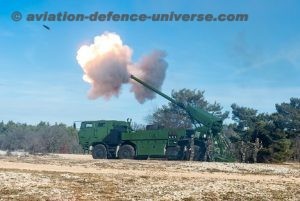
The principle project to buy 400 x 155mm / 52 caliber towed guns followed by the indigenous manufacture of another 1180 guns which was stuck at the trial stage for the last two years, seems to be finally on track. In contention were the Israeli Elbit Systems (earlier Soltam) ATHOS 155mm/52 calibre and French Nexter’s TRAJAN 155mm/52 Calibre Towed Gun Systems. The significant feature of these trials has been the involvement of major private sector defence companies who tied up with the foreign vendors – Bharat Forge with Elbit and Larsen & Toubro (L & T) with Nexter. As per reports the ATHOS has been selected over the TRAJAN howitzer due to its significantly lower price bid, which is stated to be even lower than the indigenously developed Dhanush gun. With the ATAGS also showing a lot of promise, there seems to be great hope for the future of towed gun systems, the main stay of Artillery. The ATAGS is under development by the DRDO with the involvement of private sector industry, namely Bharat Forge and Tata Power SED. This is likely to be the biggest indigenous project show casing the public-private partnership and furthering the spirit of ‘Make in India’. Two prototypes have been produced one each by Bharat Forge and Tata Power SED which are presently undergoing user trials in different terrains. While it has given ranges beyond 40 km, the ATAGS is heavier than other comparable systems and the DRDO is working towards reducing the weight. With the ATAGS showing great promise the Government is likely to go in for only 400 ATHOS pieces for the time being, though price will be a key factor in determining the future course of action.
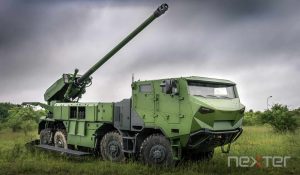
Another important project is the MGS involving
off-the-shelf purchase of 200 x 155mm/52 calibre guns, followed by indigenous
manufacture of another 614. Available in the world market are Sweden’s Archer,
French Caesar, Bosnia’s Nora Gun Systems and the Indian entities of the MGS
fielded by Tata Power SED and Bharat Forge. Even the OFB has fielded a MGS
based on a Dhanush gun of 52 calibre mounted on a 8×8 Tatra Truck produced by
BEML –this weapon system was displayed for the first time during DefExpo at Chennai
in April last year. As per reports the OFB MGS was fielded for the trials but
was not successful. Both Caesar and Archer are combat proven gun systems having
seen service in Afghanistan and Iraq. With so many players jockeying for this
project, it will be interesting to see how it finally plays out – the RFP is
expected to be issued soon.

In the SP gun system category, the 155mm/52 calibre Korean Samsung Teckwin ‘K9 Thunder’ now called the K9 Vajra-T gun system is to be produced in India by L & T in collaboration with the Korean partner. This is a major development and will give a capability fillip to the Indian defence industry – there is a requirement of 100 x 155mm/52 calibre tracked SP guns and these numbers could increase with the wheeled SP guns project now being defunct. Under the contract 10 guns will be brought from South Korea and the balance 90 will be manufactured at L & T’s strategic systems complex at Talegaon near Pune – their formal induction was done on 9 Nov last year. L & T is also reportedly constructing a production line for the Howitzer at Hazira in Gujrat.
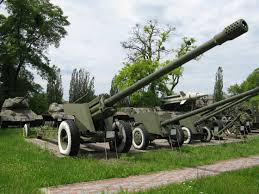
Another very significant project is the up gunning of the130 mm/39 caliber M46 Russian guns to 155mm/45 calibre-180 such guns are already in service. The defence ministry has given approval for up gunning of 300 additional M-46, 130 mm/39 calibre guns to 155mm/45 calibre with the participation of the private sector in the tender process. The private industry has been approached to undertake this project in collaboration with a foreign vendor right from providing the required ordinance and accessories to the up gunning itself. Companies like Tata, L&T and Bharat Forge are the private venders involved in this venture- this process is already in progress.
The developments in the rocket artillery and missile arena have been very encouraging. The upgrading of the existing vintage Grad BM 21 (Russian Origin) in terms of range, accuracy and a more powerful mount has made this 40 barrel rocket system more agile and lethal. With the indigenously developed Pinaka MBRL System performing exceedingly well, six more regiments have been sanctioned to add to the existing four. There is also an ongoing exercise to increase its present range from 40 to 75 km. This will greatly enhance the strategic value of this weapon system. These systems are once again being produced by Tata and L & T, pointing towards the greater involvement of private industry in defence manufacturing. Brahmos, the long range cruise missile is being manufactured in India as a joint venture with Russia. The strategic value of this system is immense and further extension of its range beyond 290 km is already work in progress.
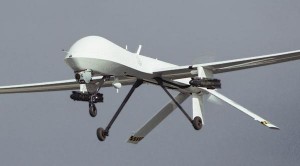
On the Surveillance and Target Acquisition front, the two types of MALE UAVs, Searcher Mk 2 and Heron are already part of the Artillery inventory, now being transferred to Army Aviation. As per reports the Army along with the Navy is also looking at acquiring Avenger UAVs (formerly Predator C) from General Atomics, USA. This issue was also discussed in the 2+2 strategic dialogue between India and the US last year. In addition the development of the indigenous ‘Swati’ weapon locating radar by the BEL is certainly a major achievement in the modernization and ‘Make in India’ process. This weapon system has already entered service and competes with the best in the world like the American ANTPQ-37 WLR- the Artillery has approximately 30x ANTPQ-37 in its kitty and is looking at inducting 28 SWATI systems.
The inadequacy of ammunition remains a critical issue, for without ammunition the Guns and Rocket Systems are of no value. The Kargil war exposed our vulnerability to ammunition shortage to sustain even a short term conflict. It is therefore heartening to note that the Government is addressing this issue on priority, with the active involvement of public-private sector entities in manufacturing. The Artillery is also looking at acquisition of smart ammunition and the percentage to be acquired vis a vis dumb ammunition. Studies have been carried out to work out the overall requirement keeping the cost factor in mind.
Conclusion
The Regiment of Artillery’s modernization and transformation process has finally been set into motion. The Government’s decision to involve the private sector in defence production and the focus on ‘Make in India’ and indigenisation, has given a major boost to this artillery modernisation process. A number of private companies like L&T, Bharat Forge, Mahindra Defence Systems, Tata Powers, Reliance Defence and Punj Lloyd have taken the plunge and are forging JVs with renowned global defence equipment manufacturing companies, especially those related to manufacture of 155mm/52 caliber artillery howitzers of all types. Also in a major policy shift, Licenses are being given to the private sector for development / production of certain type of ammunition like fuzes and charge systems – a very welcome step under the present circumstances. There is an urgent need to maintain this momentum to upgrade/modernise the artillery and ensure accelerated acquisitions to effectively redress the growing absoloscence of the Indian Artillery in the coming decade.
(Lt Gen BS Pawar is a Delhi based defence analyst, former Head of the Army Aviation Corps and Commandant School of Artillery. The views in the article are solely the author’s. He can be contacted at editor.adu@gmail.com.)






































